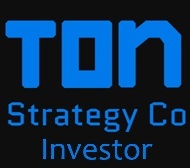If you've been following along with my other posts
Post# of 33178

This post will look at how one of them got there.
Seismic added 50 new customers in 2017
What, that's it you might be thinking. Verb is adding more than that now. That brought Seismic total customer count to 140+.
"Seismic, the leading global sales and marketing enablement solution for financial services, today announced that they added 50 asset management firms to their client roster in 2017. The annual growth brings the total number of asset managers using the solution to over 140 "
February 7, 2018 - Seismic Passes 100 Total Asset Management Customers in 2017
https://seismic.com/company/newsroom/seismic-...mers-2017/
A year later, well 51 weeks later, the announced $100M in revenue and also did a raise for $100M a month earlier.
Now why would a company that has $100M in revenue need to raise that amount? Wouldn't that hurt all the private investors?
Guess not if all the raises they did over the years to grow now resulted in a valuation of $1B+
“ Crossing $100 million in revenue is a significant moment in any software company’s history. Being the first sales enablement technology provider to do so also makes it a significant moment for the industry at large,” said Doug Winter, Seismic co-founder and CEO.
"Following December’s $100 million Series E investment which valued the company at more than $1 billion , Seismic today revealed that it plans on growing headcount by more than 300 in 2019, with the majority of new hires allocated to Product, Engineering and Customer Success organizations."
January 31, 2019 - Seismic Surpasses $100m in Revenue
https://seismic.com/company/newsroom/seismic-...n-revenue/
But wait, there is more...
Seismic announced TODAY they raised another $92M. What?
Get out of here, red! How can this be?
The company is now valued at $1.6B
That is just a little less than 6x what investors put into it
If you asked me, that is pretty good
"Seismic, the industry-leading sales enablement and marketing orchestration platform provider, and Permira, the global private equity firm, today announced Seismic has raised a Series F round of $92M led by a company backed by the Permira funds to accelerate Seismic's rapid innovation, international growth, and M&A activity. Additional new strategic investors include Ameriprise Financial and EDBI. Existing investors participating in the round include Jackson Square Ventures, Lightspeed Venture Partners, and T. Rowe Price. This round brings the total raised by Seismic to approximately $270M to-date and values the company at approximately $1.6 billion ."
Sep 29, 2020 - Seismic Raises $92M in Series F Funding Led by the Permira Funds, Valuing Company at ~$1.6B
https://www.prnewswire.com/news-releases/seis...39929.html
"With more than 600 enterprise customers worldwide..."
The now have 600 enterprise customers.
About 4 times as many as 2 1/2 years ago
Not quite doubling the number of customers, but I calculate a 89% increase year over year
Seems like some good grown and some great valuation
Hopefully you are starting to get the picture you don't need a million customers or billions of users to do well in this industry
Now let's take a look at Seismic pricing
Implementation costs: $697,703.
Annual license costs: $1,028,500.
Total three-year benefits: over $24 million.
Dang, a million buckaroos
red, could you break down the cost of Seismic, seems high?
• Seismic licensing costs for 1,000 sales/account reps and 50 marketers of $3,085,500 for 3 year contract
• Professional services costs of $154,275 . These include costs for data migration, tagging documents, integration
requirements, and testing for the Seismic implementation.
• Implementation costs of $480,000 . The full implementation process for the representative organization took eight months . However, in six to eight weeks, the representative organization was able to integrate basic functionality of Seismic and start realizing its benefits. Full integration, training, and rollout of Seismic took about eight months. The
representative organization estimated a total of six internal FTE requirements from Salesforce.com specialists, marketers, project managers, developers, and sales teams to fully integrate and launch the solution in its
environment. These costs capture the internal labor spent on this transition as well as the rollout of Seismic.
• Ongoing internal labor costs of $120,000 each year . Ongoing administration, training, maintenance, and support of Seismic required one FTE annually for the representative organization.
https://cdn2.hubspot.net/hubfs/253739/Forrest...inal-1.pdf
Wow, that some some serious time to implement and cost
I bet a younger company could come along and do it better, faster, stronger with less expense and time
Who has 8 months to wait especially in this age with a pandemic
Let's get to some financial nuts and bolts
Seismic cost about $81/mo a user just for the licensing cost.
Solofire is $50/mo. for the teams version
Let's assume the enterprise version is higher and just call it $81/mo to make comparison easy
So possibly licensing cost is about the same more or less, but what about the implementation cost?
You know, that $697,703?
That's one of the selling points with Solofire.
It doesn't cost $700K and take 8 months to get setup
Now you know Seismic didn't start off out of the gate as a billion dollar company
Now you know they don't have millions of customers
Now you know the size of their large licensing deals are $1M
Now you know Verb with Solofire can compete for those $1M deals
So red, are you saying Verb can make $1M/year on some large customers in the Medical Device and Life Sciences since they might be priced about the same?
No, absolution not
Why would VERB limit themselves to just that one industry when there are 14?
Energy
Financial Services
Business Services
Consulting
Consumer Packaged Goods
Government & Non Profits
Healthcare and Life Sciences
Insurance
Manufacturing
Media and Advertising
Technology
Telecommunications
Travel and Transportation
Wealth Management
Remember, some of these industries have a lot of money to spend on sales and marketing. I posted yesterday Microsoft spends almost $20B
Of all the Sales Enablement companies out there, there is one that has something very unique
Guess who?

 (19)
(19) (0)
(0)